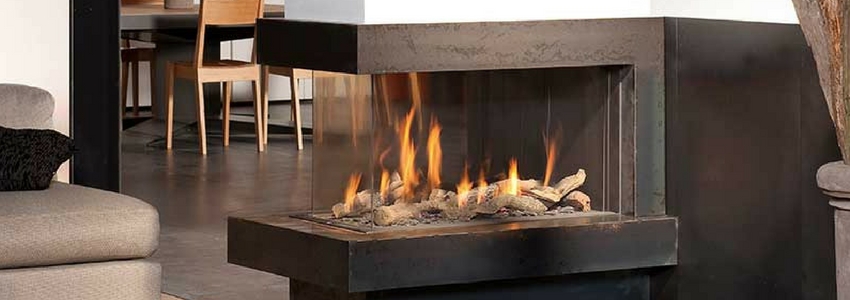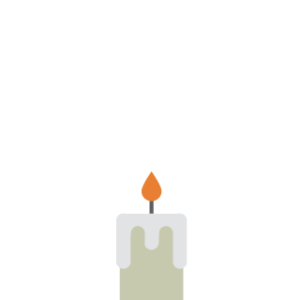
What are the pros and cons?
Our resident experts turn the heat up on the debate with this handy guide.
A fireplace is the heart of a living space. Finding one that compliments a rooms décor is essential, however, it’s just as important to consider the practicalities before committing.
There’s a lot to consider, from style to convenience, installation to venting. The great news is, no matter your situation, budget or limitations, there are so many options available that you can always find your perfect fireplace.
The first thing you need to decide is what type of fire you want or need. There are three main fuel types:



To help you make this all-important first decision, our team of experts have compiled this helpful chart which outlines the key differences between each.
Electric Fireplaces
Gas Fireplaces
Wood Fireplaces
Cost

Generally, cheaper to buy and install than other fire types.

Unit costs and installation may be higher than electric fires, but gas is far cheaper than electricity.

Adding a real wood fireplace can be costly, as is the ongoing cost of wood.
Efficiency

Modern electric fires tend to run efficiently. However, electricity is one of the most expensive forms of heating fuels.

Gas offers a high fuel efficiency and can quickly heat large rooms with little gas required.

Open fires have an efficiency of 20%*, whereas wood burners can operate with 80%* efficiency.
Convenience

Extremely convenient, these can often be moved from room to room, come with timers and remote controls too.

Convenient, quick and easy to use. Many can be controlled remotely and will provide heat during power outages.

Requires cleaning and fire building per use, plus obtaining wood. However, will work during electricity outages.
Maintenance

Minimal except occasional cleaning and vent dusting.

No ash residue or nasty odours make these a low-maintenance option.

The fire and chimney will need thorough cleaning once a year (at least).
Installation

Easy! No chimney required. Just wall fixings in most cases.

Can be installed anywhere so long as there is a gas supply. It is easy to convert wood-burning fireplaces into gas fireplaces.

A chimney is required, which can be installed, but the process is often difficult and expensive.
Flexibility

These can be placed in any room in the house, so long as there is a plug socket.

Can be installed where ever gas can be piped. But can’t be moved easily.

Available in a number of sizes which can heat most medium to large-sized spaces.
Heat Output

Instant heat and blower forces the warmed air out into the room. However, they work best in smaller rooms.

Gas fires produce a lot of heat and some have blowers to push heat around a room.

Depending on the setup, an amount of heat can space through the chimney. They also pull 10%* of the indoor air.
Safety

Clean heat, and minimal fire risk. Outer casing is often cool, making it safer for kids and pets.

Real flames pose a danger to children and animals. However, this can be remedied with a fire cage.

Whether an open or closed fire, there is an increased fire risk. Children and pets pose additional consideration.
Environment

Whilst it does not release any pollution into the air itself, the environment is impacted by electricity plants.

Burning gas produces a small amount of carbon monoxide.

While wood smoke is not as toxic as car fumes, wood fires still more pollutant than other types of fireplaces.
Ambiance

Some electric fires accurately resemble a real fire, but ultimately, it’s not real.

Real flames create a nice ambience, but not the extent of a real fire.

Nothing really beats the smell and sound of a real wood fire. They bring a homely ambience to any room or setting.
Design & Aesthetics

There are many design options to suit all decors, though generally, these suit slightly more modern interiors.

There’s an extensive range of designs and options available which compliment nearly all homes and styles.

Wood fires can be extremely decorative, however, they tend to favour a more traditional look.
Bottom Line
Low-fuss and low-cost decorative fireplaces which are perfect for those needing a little more flexibility. Modern electric fires are stylish, efficient and effective.
The best of both worlds, gas offers real flames, with convenience. Cheap to run and tons of design options, they’re ideal for most setups.
Whilst there’s nothing convenient about a wood fire, there’s nothing quite like having one. If your house is of a certain style, they’re quintessential, but come with a price tag and high maintenance.
*approximately
Gas or electric - which is cheaper to run?
Obviously, there are a number of variables that come into play with this question such as insulation, energy unit costs, the efficiency of the fireplace you choose etc.
However, gas is generally a lot cheaper. Even as much as 70% in fact!
Generally speaking, Electric Fires and Flueless Gas Fires both have 100% efficiency so it’s easy to compare the cost/energy figures. For example:
- A gas fire will cost around 4.5p/hour per Kw
- An electric fire will cost 15p/hour per Kw
Whilst gas fires can cost more to install, the investment balances out soon enough (and you’ll feel less guilty using it!). For this reason, if you have the option of gas, it’s usually the default one to go for.
